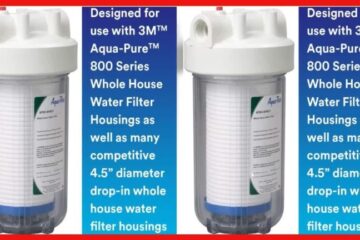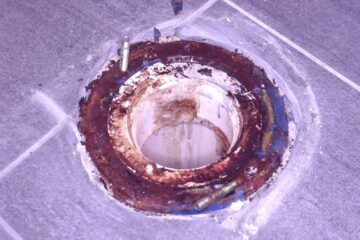In today’s world where access to fresh water is becoming increasingly scarce, the process of desalination has emerged as a vital solution. Desalination, the process of removing salt and impurities from seawater, holds the potential to address the global water crisis and provide a sustainable source of drinking water. This comprehensive guide aims to equip you with the knowledge and understanding of different desalination techniques, their pros and cons, and the factors to consider when implementing them. From distillation to reverse osmosis, explore the intricacies of water desalination and discover the key steps to turn seawater into a valuable resource.
Understanding Desalination
What is desalination?
Desalination is the process of removing salt and other impurities from seawater or brackish water to make it suitable for human consumption or irrigation. This process involves separating the salt and other dissolved solids from the water, resulting in fresh and drinkable water.
Why is desalination important?
Desalination plays a crucial role in addressing water scarcity issues around the world. With a growing global population and increasing freshwater demands, desalination provides an alternative source of clean water. It allows regions that suffer from water scarcity, such as arid coastal areas or islands, to have a reliable supply of potable water.
Types of desalination processes
There are several desalination processes, each utilizing different principles and technologies to achieve freshwater production. Four common types of desalination processes include reverse osmosis, multi-stage flash, multi-effect distillation, electrodialysis, solar desalination, and the application of nanotechnology in desalination.
Reverse Osmosis Desalination
Introduction to reverse osmosis
Reverse osmosis (RO) is a widely used desalination process that relies on a semi-permeable membrane to separate salts and other impurities from water. It is based on the principle of applying pressure to overcome osmotic pressure and force water molecules to pass through the membrane, leaving behind concentrated brine.
Principle and process
In reverse osmosis desalination, seawater is pressurized and forced through the semipermeable membrane. The membrane allows water molecules to pass through while rejecting the salts and other dissolved solids. The resulting freshwater is collected, while the concentrated brine is discharged.
Equipment and materials needed
To carry out reverse osmosis desalination, the following equipment and materials are required: a high-pressure pump to provide the necessary pressure, a semi-permeable membrane, a pre-treatment system to remove particulates and reduce fouling, and a post-treatment system to ensure the water meets quality standards.
Factors affecting efficiency
Several factors can influence the efficiency of reverse osmosis desalination. These include feedwater quality, membrane fouling, membrane integrity, operating pressure, temperature, and recovery ratio. Optimal system design and regular maintenance are essential for maximizing efficiency and prolonging the membrane’s lifespan.
Advantages and disadvantages
Reverse osmosis desalination offers numerous advantages, such as high salt rejection rates, modular design flexibility, and relatively low energy consumption compared to other desalination methods. However, it also has some drawbacks, including the need for pre and post-treatment, sensitivity to fouling, and the production of concentrated brine that requires proper disposal.
Multi-stage Flash Desalination
Overview of multi-stage flash desalination
Multi-stage flash (MSF) is a thermal desalination process that utilizes the principle of evaporation-condensation to separate freshwater from seawater. It involves multiple stages of heating seawater, producing steam, and then condensing it to obtain freshwater.
Working principle
In multi-stage flash desalination, seawater is heated under high pressure to produce steam. This steam is then passed through a series of chambers or stages at progressively lower pressures. As the steam condenses, it is collected as freshwater, while the remaining brine is discharged. The process is repeated in subsequent stages to increase freshwater production.
Process stages
The multi-stage flash desalination process typically consists of several stages, each operating at a different pressure level. The seawater enters the first stage, where it is heated to produce steam. The steam is then directed to the subsequent stages, where it condenses into freshwater. The number of stages depends on the desired freshwater output and the efficiency of the system.
Components and design
A multi-stage flash desalination system consists of various components, including heat exchangers, condensers, flash chambers, and brine heater tanks. The design of the system plays a crucial role in optimizing freshwater production while minimizing energy consumption. Factors such as heat transfer efficiency, pressure levels, and flow rates need to be carefully considered during the design process.
Benefits and drawbacks
Multi-stage flash desalination offers advantages such as high freshwater production capacity, low energy consumption compared to other thermal desalination methods, and operation without any moving parts. However, it also has some drawbacks, including the need for a significant amount of energy for heating seawater, high capital and maintenance costs, and potential scaling or fouling issues.
Multi-effect Distillation Desalination
Introduction to multi-effect distillation
Multi-effect distillation (MED) is a thermal desalination process that utilizes multiple stages of evaporation and condensation to separate freshwater from seawater. It operates based on the principle that water boils at lower temperatures under reduced pressure, allowing for efficient freshwater production.
Operating principle
In multi-effect distillation, a series of evaporators are connected in a sequence, where each subsequent stage operates at a lower pressure than the previous one. The seawater is preheated and enters the first evaporator stage, where it boils due to the reduced pressure. The resulting steam is then condensed, collected as freshwater, and used as a heating source for the subsequent evaporator stages.
Working process
Multi-effect distillation involves the continuous evaporation and condensation of seawater in multiple stages. Each stage operates at a different pressure, allowing the water to evaporate and condense repeatedly. The heat from the condensation process is used to generate the vapor required for the subsequent stages. As a result, freshwater is produced, while the brine is discharged.
Various types of multi-effect distillation
There are several variations of the multi-effect distillation process, including multi-effect humidification (MEH), multi-effect vacuum distillation (MEVD), and multi-effect reboiler (MER). These variations differ in terms of design, heat transfer mechanisms, and overall system efficiency.
Advantages and limitations
Multi-effect distillation offers advantages such as high freshwater production efficiency, the ability to utilize waste heat sources, and minimal scaling and fouling issues. However, it also has limitations, including high energy consumption, the need for precise control of multiple stages, and potential corrosion or erosion concerns.
Electrodialysis Desalination
Understanding electrodialysis
Electrodialysis is a desalination method that utilizes an electric field to remove dissolved ions from water. It employs ion-exchange membranes and ion-selective membranes to separate and concentrate salts, producing freshwater and a concentrated brine stream.
How electrodialysis works
In electrodialysis, seawater is passed through a series of alternating anion and cation exchange membranes. An electric field is applied across the membranes, causing the positively charged ions, or cations, to migrate towards the negatively charged electrode and the negatively charged ions, or anions, to migrate towards the positively charged electrode. The resulting freshwater is collected, while the remaining concentrated brine is discharged.
Components and setup
An electrodialysis system consists of several key components, including the ion-exchange membranes, electrodes, a power supply, and a water flow system. The setup involves arranging the membranes in a stack, with alternating cation and anion exchange membranes. The electrode placement and the configuration of the stack play a vital role in optimizing the salt removal efficiency.
Comparison to other desalination methods
Electrodialysis offers some notable advantages over other desalination methods. It has relatively low energy consumption compared to thermal desalination processes, does not involve the use of chemicals, and can handle a wide range of feedwater salinity levels. However, it also has limitations, including the need for frequent membrane cleaning and the production of a concentrated brine stream that requires proper disposal.
Pros and cons
The advantages of electrodialysis include its potential for using renewable energy sources, compatibility with brackish water desalination, and the ability to remove specific ions. On the other hand, electrodialysis has disadvantages such as high initial investment costs, sensitivity to fouling, and limited scalability for large-scale water production.
Solar Desalination
An overview of solar desalination
Solar desalination harnesses solar energy to produce freshwater by evaporating seawater or brackish water. It utilizes various techniques and technologies to maximize energy efficiency and freshwater output, making it a promising solution for water-scarce regions.
Different solar desalination techniques
There are several solar desalination techniques, including solar stills, solar-powered reverse osmosis, and solar-driven distillation. Solar stills are the simplest and most commonly used technology, consisting of a sloped transparent surface that collects solar radiation and allows for evaporation and condensation of water.
Solar stills and their mechanisms
Solar stills operate based on the principle of heating water using solar radiation, causing it to evaporate and condense on a cooler surface, which then collects as freshwater. The stills are designed to maximize evaporation while minimizing heat loss, often incorporating insulation and reflective materials to enhance efficiency.
Factors influencing solar desalination
Several factors can influence the efficiency and performance of solar desalination systems. These include solar radiation availability, ambient temperature, wind speed, the design and materials of the solar stills, and the presence of impurities in the feedwater. Optimal system design and geographical location selection are crucial for maximizing freshwater production.
Advantages and limitations
Solar desalination offers several advantages, including the use of renewable energy, low operating costs, and the absence of greenhouse gas emissions. It is particularly suitable for remote areas with limited access to electricity and fossil fuels. However, it also has limitations, such as low freshwater production rates, dependency on weather conditions, and the need for large land areas for effective deployment on a large scale.
Nanotechnology in Desalination
The application of nanotechnology
Nanotechnology has emerged as a promising field for enhancing desalination processes. It involves the manipulation and control of materials and structures at the nanoscale level to improve membrane efficiency, increase salt rejection rates, and reduce energy consumption in desalination systems.
Nanomaterials used in desalination
Various nanomaterials, such as graphene oxide, carbon nanotubes, and nanoparticles, have shown potential for enhancing desalination processes. These nanomaterials can be incorporated into membranes to increase their selectivity, reduce fouling, and boost permeability, ultimately improving the efficiency and performance of desalination systems.
Advanced membrane technologies
Nanotechnology has also contributed to the development of advanced membrane technologies for desalination. Thin-film composite membranes, forward osmosis membranes, and nanocomposite membranes have been created by incorporating nanomaterials and nanofabrication techniques. These membranes offer improved salt rejection rates, better fouling resistance, and enhanced durability.
Enhancing desalination efficiency with nanotechnology
Nanotechnology has the potential to significantly improve the efficiency of desalination processes. It can enhance water permeability, increase salt rejection rates, reduce membrane fouling, and minimize energy consumption. By leveraging nanomaterials and advanced membrane technologies, desalination systems can become more efficient, cost-effective, and environmentally sustainable.
Challenges and future prospects
Although nanotechnology shows great promise in desalination, there are challenges to overcome. These include scaling up nanomaterial production, addressing potential environmental impacts, and ensuring the long-term stability and durability of nanomaterial-enhanced membranes. Continued research and development are necessary to fully realize the potential of nanotechnology in desalination.
Environmental Impact of Desalination
Effects on marine ecosystems
Desalination plants can have various impacts on marine ecosystems. Intake structures used to draw seawater into the plant may entrain and harm marine organisms, particularly small planktonic organisms. Additionally, the discharge of brine and other waste streams can alter the salinity and chemical composition of the receiving waters, potentially affecting marine life.
Brine and chemical discharge
The discharge of brine, a highly concentrated salt solution, can have adverse effects on marine environments. The increased salinity can harm sensitive organisms and disrupt the balance of marine ecosystems. In addition to brine, desalination processes may involve the use of chemicals for pre-treatment, cleaning, and disinfection, posing potential risks if not properly managed.
Energy consumption and greenhouse gas emissions
Desalination processes, particularly thermal methods, require significant amounts of energy. The energy consumption contributes to greenhouse gas emissions, exacerbating climate change. However, advances in renewable energy integration and energy recovery systems are helping to reduce the environmental footprint of desalination.
Sustainable desalination approaches
To mitigate the environmental impact of desalination, sustainable approaches are being adopted. These include the use of energy-efficient technologies, such as advanced membrane materials and high-efficiency pumps, and the implementation of renewable energy sources, such as solar and wind power, to power desalination plants. Additionally, strategies to minimize chemical usage and optimize brine disposal are being developed.
Mitigating the environmental impact
To minimize the environmental impact of desalination, careful site selection, comprehensive environmental impact assessments, and adherence to stringent regulations and guidelines are crucial. The use of advanced treatment technologies, such as membrane bioreactors and reverse osmosis with high recovery rates, can reduce brine discharge and enhance environmental sustainability.
Benefits and Challenges of Desalinating Water
Advantages of desalination
Desalination offers several advantages in addressing water scarcity and meeting freshwater demands. It provides a reliable source of freshwater in regions where traditional water sources are limited, helps reduce dependence on finite freshwater resources, and serves as a drought-resistant water supply. Desalination also offers opportunities for economic growth and improved quality of life, particularly in coastal areas.
Cost considerations
Desalination, particularly large-scale projects, can be a capital-intensive endeavor. It involves significant upfront investment in infrastructure, equipment, and maintenance. However, as technology advances and economies of scale are achieved, the cost of desalination is gradually decreasing. The cost of desalinated water is also influenced by factors such as energy prices, feedwater quality, and the choice of desalination technology.
Infrastructure requirements
Desalination plants require a robust infrastructure to operate effectively. This includes intake and outfall structures, pretreatment facilities, energy supply systems, and distribution networks. The design, construction, and maintenance of this infrastructure must adhere to stringent engineering standards to ensure safe and efficient operations.
Social and political challenges
Desalination projects can present various social and political challenges. Public acceptance and perception of desalination as a viable water source may influence the success of projects. Community engagement, stakeholder involvement, and environmental justice considerations are crucial for addressing concerns and ensuring equitable water access.
Future potential
The future of desalination is promising, with ongoing research and development driving innovation and improvements in efficiency, cost-effectiveness, and environmental sustainability. Advancements in membrane technologies, energy recovery systems, and renewable energy integration are expanding the possibilities for large-scale and decentralized desalination solutions.
Summary of desalination methods
Desalination is a crucial process for addressing water scarcity and ensuring a reliable supply of freshwater. Various desalination methods, such as reverse osmosis, multi-stage flash, multi-effect distillation, electrodialysis, solar desalination, and nanotechnology-based approaches, offer different advantages and limitations in terms of efficiency, energy consumption, and cost effectiveness.
Importance of desalination for water scarcity
Desalination plays a vital role in mitigating water scarcity, particularly in arid coastal areas and water-stressed regions. As global population growth and water demands increase, desalination provides a viable solution for securing a sustainable freshwater supply. By exploring and improving desalination technologies, we can alleviate water scarcity and promote water resilience in the face of climate change and increasing demand.



